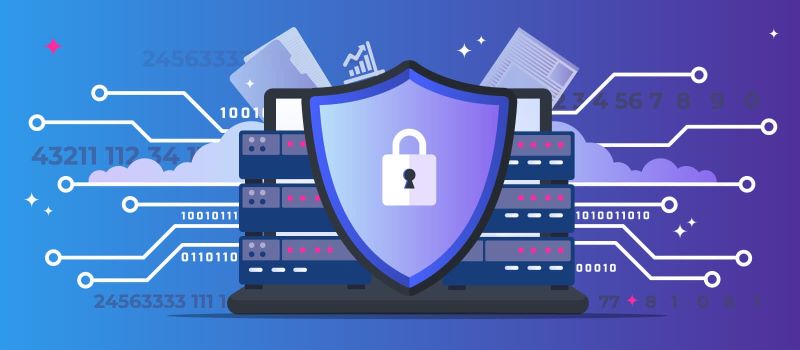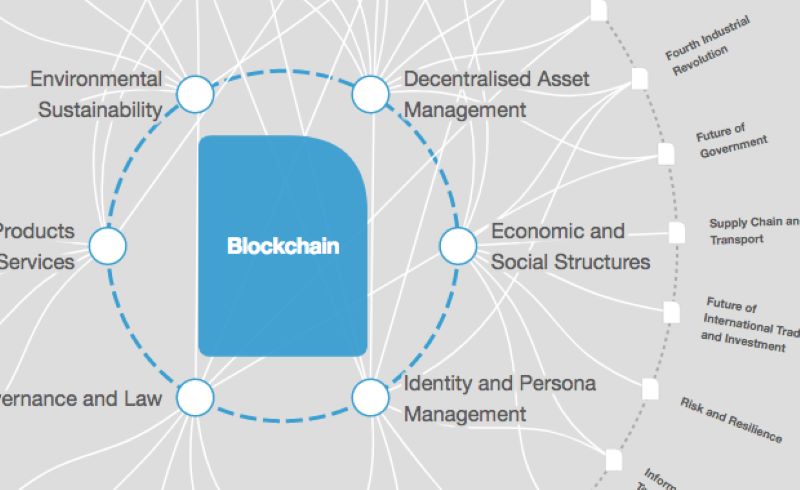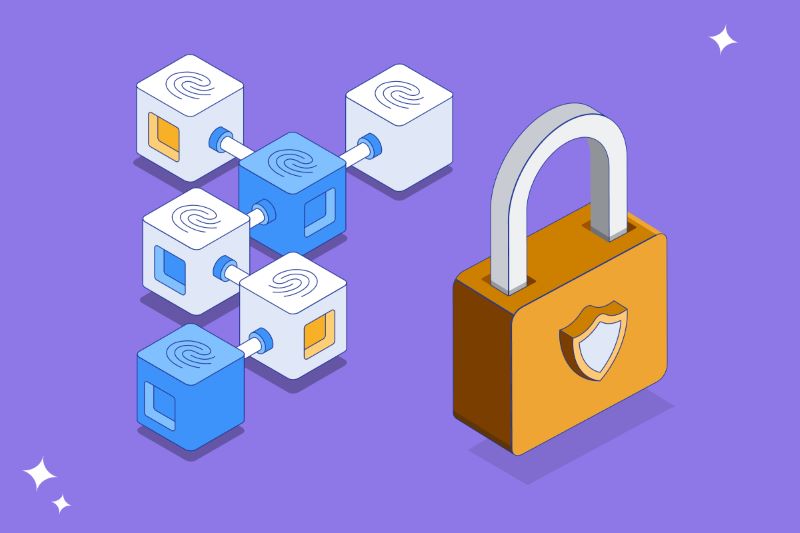Enterprise Blockchain Emergence: Unlocking Top Security Requirements
As the world moves full tilt towards digital, enterprises can’t afford to lag in adopting tech that keeps their data safe. Grasping the security requirements for enterprise blockchain adoption is vital. It’s like putting the strongest lock on your treasure chest. In this dive into blockchain security, I’ll walk you through the ins and outs. We’ll look at making your data as uncrackable as diamond, crafting strategies that shield your blockchain like an unbreakable fortress. Get ready, because I’m about to make tech security a breeze.
Understanding the Security Ecosystem for Enterprise Blockchain
Integrating Advanced Cryptographic Methods
In the world of blockchain in business security, advanced cryptographic methods are key. They turn plain info into hard-to-crack codes, keeping data safe within the blockchain. This means your secrets stay hidden from hackers, and only those meant to see the info can.
With each piece of data, a complex math problem locks it down. This math problem is so hard, it would take super-fast computers ages to solve. So, the data stays protected. Cryptographic methods for blockchain are the guards that keep prying eyes out. They ensure that all the things done in the blockchain – like sending money or signing deals – are secure.
This tech is not just for top-secret stuff. It’s for all sorts of blockchain cybersecurity best practices. It’s used in securing blockchain transactions, from buying a snack with digital cash to big deals between companies.
Building a Robust Blockchain Data Breach Prevention Strategy
Now, let’s chat about keeping unwanted guests out. Like a castle with a moat and high walls, we must shield our blockchain data with top security. We plan and set up ways to find trouble before it finds us.
The steps to stop data breaches start with knowing what could go wrong. Blockchain risk assessment frameworks are like looking at a map before a trip. They show us the risks and how to steer clear of dangers.
Next, we use rules and tools to keep the bad folks out. Private blockchain access control is like having a list of who can come into your castle. Only folks on the list can get in. For bigger networks, blockchain cybersecurity best practices are the rules everyone follows to stay safe.
Protecting your digital treasures, safeguarding digital assets such as tokens and smart contracts, is also huge. We put in multi-signature authentication in blockchain. Think of it as needing several keys to open a chest of gold. More keys mean it’s tougher for robbers to grab the loot.
And we can’t forget blockchain security audits. It’s like having a wise advisor who checks the castle’s defenses and finds weak spots before they can be tested. When we check and double-check, we make sure the walls are strong and the gates locked tight.
Blockchain in business security is all about planning, making tough codes, checking who comes in, and having quick thinkers ready for anything. When we do all this, we build a safe zone where businesses can thrive. Together, we can create a secure future for everyone who uses the blockchain.
Addressing The Specifics of Blockchain Model Security
Permissioned Ledger Vulnerabilities and Access Control
When diving into the world of blockchain in business security, words like ‘permissioned ledger’ often pop up. Think of this as a VIP room. In permissioned blockchains, only some people can enter, view, or do business. But even VIP rooms have weak points. To stop unwanted guests, we must know these chinks in the armor.
Private blockchain access control decides who gets in and the leeway they have. It’s like giving keys to a select few. But keys can get lost or stolen, right? Same goes here. If access falls into wrong hands, data might be at risk. Smart contract security protocols are also big in permissioned blockchains. They’re like bouncers that enforce rules, keeping parties in check. But they have to be keenly set so no one sneaks past.
Now, blockchain cybersecurity best practices are a must. This means having tight controls and always staying alert to threats. We must armor up with the latest blockchain data breach prevention tools. This way, we can spot trouble early. It’s a lot like having a top-flight security system guarding your home.
Enhancing Public and Consortium Blockchain Security Measures
Switch gears to the wild west of blockchains: public and consortium types. Here, anyone can join the fray. While it’s bustling and open, it’s a haven for hackers too. So, to keep these blockchains safe, a strong suit of armor is key. That means both tech and strategy need to sync up perfectly.
Think distributed ledger technology safeguards. They’re vast nets spread out to catch fishy activity in its tracks. Now, add blockchain cybersecurity best practices into the mix. These shape up as constant vigil, like knights keeping watch over a kingdom.
In the realm of these blockchains, robust cryptographic methods are the spells that shield data. Also, weaving in multi-signature authentication is like adding a moat. More barriers, more safety, right? They demand several keys before letting anyone make a move, adding layers of security.
Consensus mechanisms safety adds another shield. This is how everyone agrees on what’s true in the blockchain world. It has to be rock-solid, or else the forge is open to tampering. Ledger tamper resistance is exactly that – keeping our records straight and unaltered, no matter what.
And with crossroads like these where many paths meet, cross-chain interoperability risks and blockchain platform security comparison come into the picture. We have to make sure every path is safe to travel. That way, we’re sure of peace and prosperity across our blockchain lands.
In essence, secure blockchain implementation is about mixing the strong points of a fortress with the smarts of a highly-skilled guardian. It takes care, precision, and constant learning to keep our enterprises and their data as safe as castles, with the wealth inside untouchable by dragons or marauders. And that, fellow pioneers, is our quest in the grand adventure of blockchain.
Governance and Compliance in Blockchain Security Architecture
Implementing Effective Blockchain Risk Assessment Frameworks
To keep your blockchain safe, start with a strong risk check. You need to know where your security might fail. Think of it like checking a castle’s walls for weak spots. Smart attackers look for the smallest gaps. So, we put our hacker hats on and find those first.
With every new tech in your business, new risks show up. For blockchains, we check how every piece connects. This makes sure each step in the network defends against attacks. To do this, we make a list of all the things that could go wrong. Then we rate them — how likely are they, and how bad would it be if they happened?
Here’s a simple way to think about it:
- What do we have? Identify all the tech, data, and people involved.
- What could go wrong? List all possible threats, like hacking or data leaks.
- How likely is trouble? Some things might nearly never happen, others more so.
- What’s the damage if it does? A small bug might be easy to fix. A big breach? Not so much.
Adhering to Enterprise Blockchain Compliance Requirements
Rules and laws are not just annoying red tape. They are like the rules of a sport — they keep the game fair and fun. So, in blockchain for business, we follow certain rules to make sure we play fair. This means keeping people’s personal stuff private. It also means making accounts that show we do what we say.
You’ll hear a lot about compliance. It’s a big deal for companies. In the world of blockchain, we must be even more careful. Every trade, every bit of data, has to meet strict standards. If we don’t, well, it’s not just a slap on the wrist. We can lose trust, and for blockchain, trust is everything.
To stay on the right side of the rules, here are key steps:
- Know the laws. We learn every rule that applies to our blockchain.
- Link rules to our tech. For every law, we set up blockchain checks.
- Keep records. We store details of every move we make on the blockchain.
- Test. We always check if our tech and our moves fit the rules.
When it comes to blockchain in your business, think of these as guardrails on a bridge. We put them up not to stop us, but to keep us safe as we speed forward. They guide us and our blockchain so we can drive ahead without fear of falling.
Rules can change, and tech moves fast. So we keep learning. We watch new tech and new laws. Our job is to make sure your blockchain is both strong and straight. It’s a mix of being a tech wizard and a rulebook whiz. And that’s how we make sure when you jump into blockchain, it’s with a golden parachute, not a lead weight.
Proactive and Reactive Measures for Securing Blockchain Networks
Deploying Smart Contract Security Protocols and Audits
Let’s get down to brass tacks. Smart contracts power blockchain in business security. They are self-executing contracts with code that works when conditions are right. But they can have bugs, just like any software. This is where smart contract security protocols come in. They keep contracts safe from attack. We must test them often. This means digging deep with audits to find problems before the bad guys do. Just like a safety check on a car, audits catch issues that could cause trouble later.
Yet, how do we do smart contract audits? First, professionals with a sharp eye for code review it. They look for any weak spots. Sometimes they act like attackers, trying to break in. This helps us see if the contracts can stand up to real threats. They also look at how the contract performs. They make sure it does only what it’s meant to do. No more, no less.
Remember, smart contracts can lock and move money and valuable stuff. If there’s a hole in security, that’s a big risk. This is why we use tools and systems to test them. We run them through many scenarios. Can someone steal info? Could the contract leak money? If something wrong pops up, we fix it first, then check again. It’s non-stop and detailed work, but it must be done.
Smart, eh?
Establishing a Comprehensive Blockchain Security Incident Response Plan
Next up, we must talk about when things go south. Sometimes, despite our best efforts, incidents happen. A security incident response plan is our playbook when bad stuff hits our blockchain. Think of it as our emergency kit for when alarms go off. It outlines steps we take to limit damage and get back on track quick.
First off, we need a team ready to act. When a breach happens, time is precious. Our team must know their roles and jump into action. They check what happened, where the hole is, and how big the breach is. Then they work to close the gap, keep the damage small, and track any lost data or assets. After the dust settles, they look back at what happened. Learning from these bumps in the road helps us make better shields for next time.
It’s all about being ready before trouble comes. We drill the response plan, run mock breaches, and see how we do. This helps us stay sharp and improve. It’s about having systems that shout “Issue here!” the moment a threat shows up. We keep eyes on our systems around the clock. This way, we’re never asleep at the wheel.
To sum up, security isn’t just about strong locks. It’s about knowing what to do when those locks break. Our plan must be solid, tested, and known by all in the team. Safety comes from our hard work before an incident, and our smart moves after.
Stay safe out there.
We’ve covered a lot in this post, from cryptographic methods to crafting a solid breach prevention strategy. Understanding the security ecosystem is crucial for your enterprise blockchain. We looked at specific model security, discussed permissioned ledgers, and public blockchain safety.
Exploring governance and compliance, we learned how risk assessment frameworks and adherence to standards are foundational for blockchain security. Lastly, we tackled securing blockchain networks with the right mix of proactive smart contract protocols and reactive incident response plans.
As a blockchain expert, I urge you to take these insights seriously. Secure your network, stay compliant, and be ready to act fast when issues arise. Strong security makes blockchain an asset, not a liability. Keep learning, stay alert, and build a blockchain that stands firm against threats.
Q&A :
What Are the Essential Security Features Needed for Enterprise Blockchain?
Enterprise blockchains require robust security features to ensure data integrity, confidentiality, and availability. Essential security features often include strong access controls, encryption methods for data protection, network security protocols, and consensus mechanisms designed to resist manipulation. Additionally, ongoing monitoring systems to detect suspicious activities and an incident response plan for potential breaches are vital for maintaining long-term security.
How Can Enterprises Ensure Compliance with Blockchain Security Regulations?
To ensure compliance with blockchain security regulations, enterprises should conduct thorough research on applicable laws and adhere to industry standards. This includes implementing policies that address data privacy requirements, audit and reporting mechanisms, and adherence to frameworks like the General Data Protection Regulation (GDPR) if operating within the EU. Regular security audits and assessments can also help maintain compliance with evolving regulations.
What Are the Challenges of Implementing Security in Enterprise Blockchain?
Implementing security in enterprise blockchain can present several challenges. These can range from integration issues with existing IT infrastructure to maintaining the balance between decentralization and control. Enterprises also face the task of ensuring scalability without compromising security, managing the complexities of smart contract vulnerabilities, and addressing the risks associated with consensus mechanisms.
What Role Do Smart Contracts Play in Blockchain Security?
Smart contracts are self-executing contracts with the terms of the agreement written into code. They play a pivotal role in blockchain security by automating and enforcing transaction rules, reducing the risk of fraud. However, the security of a smart contract depends on the quality of its code, so it’s critical to conduct thorough testing and audits to identify and fix any vulnerabilities before deployment.
How Can Enterprises Mitigate Security Risks When Adopting Blockchain Technology?
To mitigate security risks during blockchain adoption, enterprises should adopt a multi-layered approach to security, invest in employee training and awareness, and leverage reputable blockchain security services. It’s important to engage in thorough testing, including penetration testing and code audits, while maintaining an adaptable security posture to adjust to new threats. Collaboration with industry experts and participation in blockchain communities can also help stay ahead of security developments.




